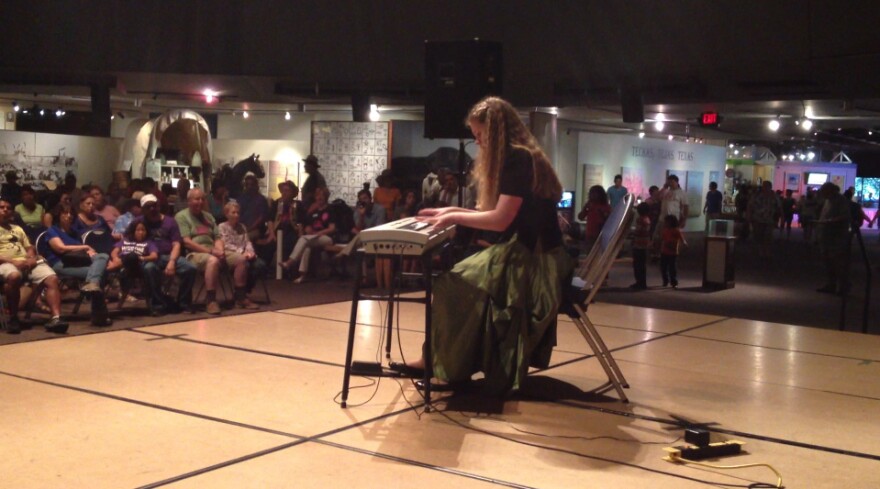[Editor's note: This report was produced by a student at Camp KPAC 2013, a week-long workshop to teach radio skills to area high school students.]
Not every 15-year-old has the dedication to spend eight hours doing any one activity other than video games, but Rhiannon Bishop dedicates herself to practicing piano for that long each day, all while completing high school two years early. A home schooled student, Rhiannon studies with Ken Thompson, founder of the Musical Arts Center of San Antonio (MACSA). In the future, Rhiannon has aspirations to pursue a degree from the Eastman School of Music at the University of Rochester in Rochester, New York.
Ryan Rogers: We had just been talking before we started recording about you studying with Ken Thompson. Can you talk a little bit about the different types of techniques he uses in lessons?
Rhiannon Bishop: Well, he uses a variety of techniques. His main technique is the Tallman Technique, and it’s kind of hard to explain; it’s a rather odd technique. A lot of teachers use the curled-finger approach, but Mr. Thompson uses the straight-finger approach, which tends to work a lot better. I used to have the curled-finger problem up until I switched with him and it took a long time to get out of that bad habit. It just feels bad now, which is good. It’s good that it feels bad.
So you had also been talking about your possible college choices; you had mentioned that you really wanted to attend Eastman. What specifically about Eastman attracts you?
What attracts me about it was, you know, they have some of the top professors over there and, a lot of people ask me, “Why not Juilliard?” My answer to that is because Juilliard is a performing arts school – you have the dance and you have the artwork and the acting and all of that along with the music – what I like about Eastman, it’s just strictly music. You don’t get caught up with the dance and all of that.
You said you’re also active in performance competitions: what kinds of competitions, which ones, and where are they?
Well, this past year, as I was saying, I went to the MTNA in Anaheim, California for the duets and I also did a Concerto Competition at Baylor.
So do you travel a lot? I suppose since you’re home schooled you have plenty of time to go to these competitions, right?
Yes, I do, and there’s loads of preparation. It’s nice that I’m home schooled because, you know, I get up in the morning, I do my schoolwork, and then about noon or one o’clock, I practice my piano.
How long do you spend practicing on a daily basis?
I’m kind of embarrassed to say this, because people say that I’m crazy, but I practice up to eight hours.
But on average, probably like five or six, but my record was eight hours and fifteen minutes. It was right before the TMTA Convention. I couldn’t imagine, you know, life without my piano; I’d be a very depressed individual.
What kind of repertoire do you work on? In the average year, how much repertoire do you cover?
Honestly, not that much, because I try to perfect the competition pieces as much as possible. This past year, I did Lowell Libermann’s Gargoyles, the fourth movement, and I paired that along with Sonata in F Major, K. 332 Movement Two of the Mozart Sonata, and I also paired it with the Bach Prelude to the English Suite, the one I played yesterday, and I learned Saint-Saens’ Concerto Number Two in G Minor. Those were my competition pieces. This year I’m doing a rather schizophrenic combination of pieces. I’m doing Le Gibet by Ravel and I’m pairing that with a rather obscure piece – it’s very obscure, actually – it’s Sonata Number Three, Opus 54 by Alberto Ginastera. It’s only a one movement Sonata, so that’s kind of odd, and then I’m pairing that with the third movement of the Mozart Sonata, and then I’ll be learning the first movement of Rachmaninoff’s Second Concerto.




